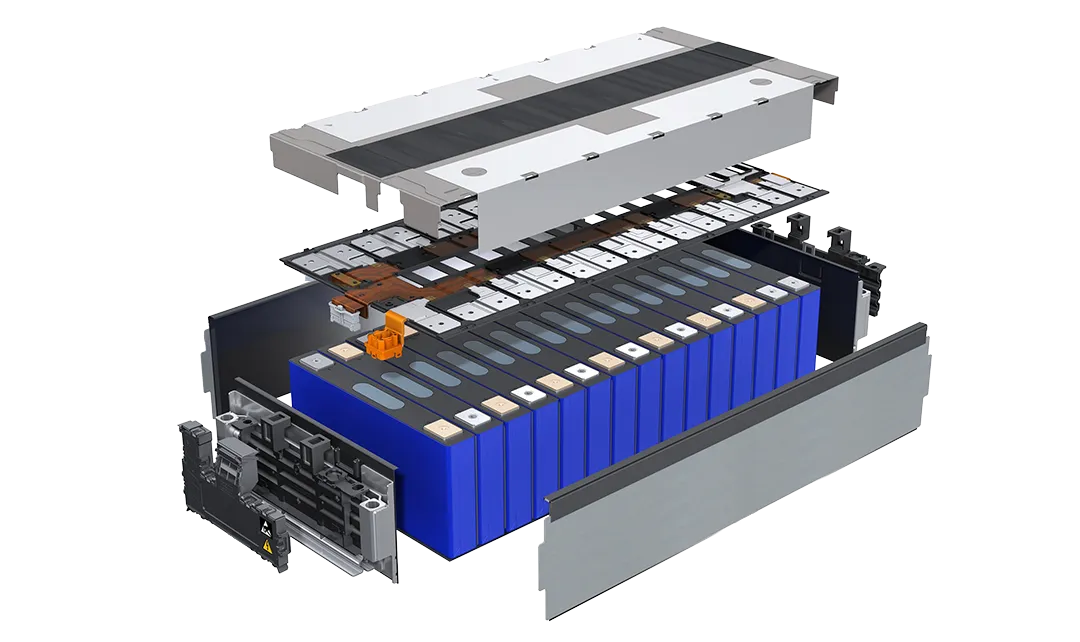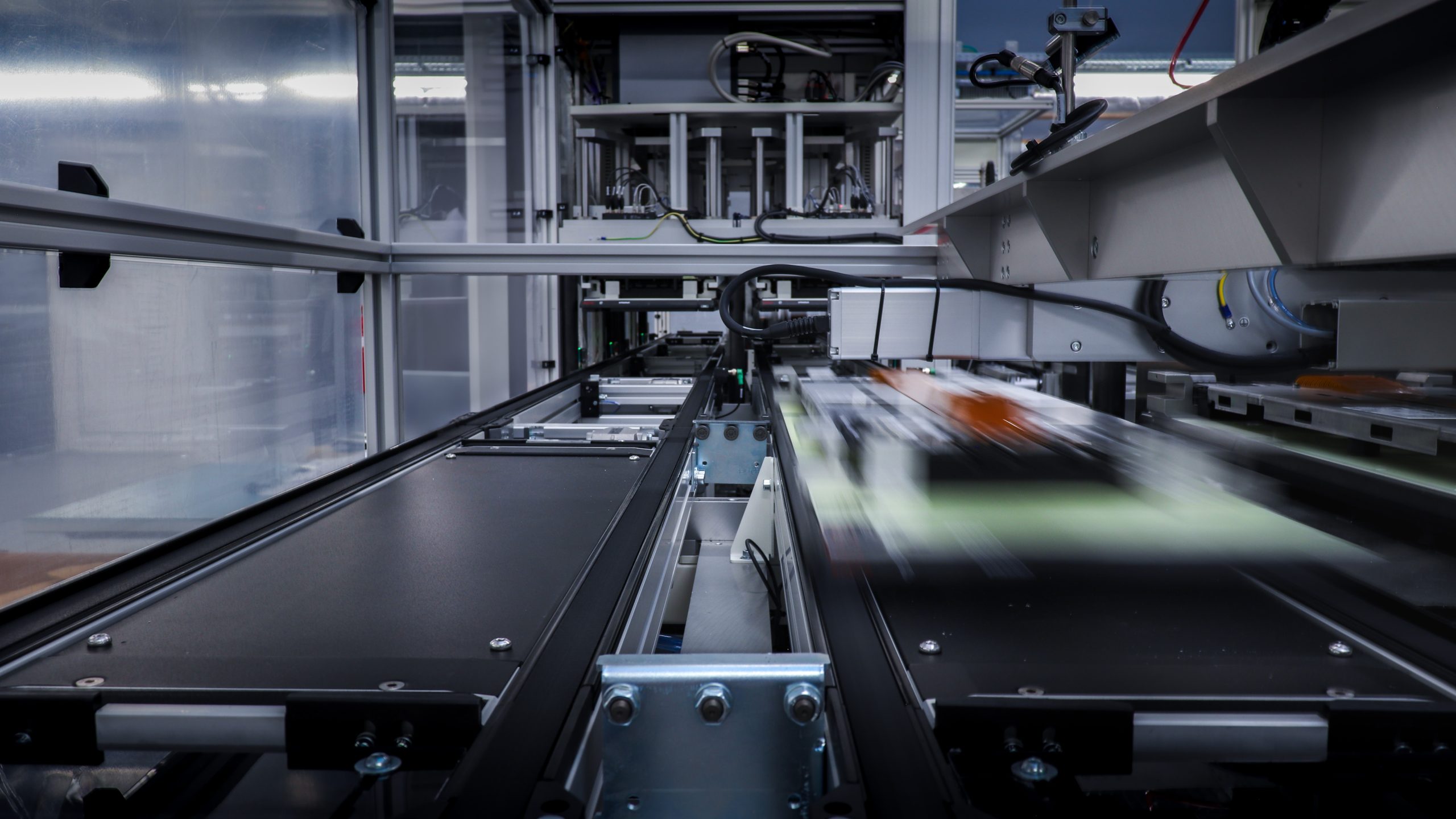Battery Management System
Introduction
The energy transition and the growing adoption of electric mobility have driven the development of increasingly sophisticated solutions for energy storage and management. At the heart of this ecosystem are battery systems, whose safety, reliability, and performance rely heavily on how they are monitored and controlled. In this context, Battery Management Systems (BMS) play a central role—not only in protecting cells and optimizing their lifecycle but also in ensuring the safe and efficient operation of electric vehicles as a whole.
The increasing complexity of battery architectures, combined with the diversity of chemistries, configurations, and regulatory requirements, presents significant challenges for BMS validation and testing in a production environment. This article explores the fundamentals of batteries and BMSs, their architectures and core functionalities, and the challenges inherent in their industrial validation. It concludes with solutions developed and implemented by Controlar on the factory floor to meet the demands of the automotive and e-mobility sectors, including an innovative system still in development to support BMS development and testing.
Energy Storage
In recent years, there has been substantial growth in the development and application of electric energy storage solutions, largely driven by the energy transition and the increasing electrification of transportation. Electric mobility—which includes automobiles, micromobility solutions, and naval and aerospace applications—has been one of the main forces behind this progress. At the same time, the broader integration of renewable energy sources into the energy grid has created a growing demand for stationary storage systems, both for residential and industrial use.

Batteries
Batteries consist of a set of cells, which are electrochemical systems made up of an anode, cathode, and electrolyte. The configuration and materials used in these components define the type of battery, determining characteristics such as energy density, charge/discharge curves, safety, lifespan, internal resistance, and thermal behavior.
Lithium-ion (Li-ion) batteries are currently the most widely used in mobile and portable applications due to their high energy density, relatively long lifecycle, and good energy efficiency. They operate through the migration of lithium ions between electrodes during charge and discharge cycles. There are several subtypes of Li-ion batteries—such as NMC, LFP, and NCA—distinguished by the cathode’s chemical composition and their respective performance characteristics (e.g., thermal safety, maximum discharge current, cost).
Lead-acid batteries, while technologically older, are still widely used in stationary applications due to their robustness and low cost. They have a long service life in float mode (under continuous charge/discharge) because their chemical composition allows for a largely reversible charge-discharge process, making them energy-efficient. However, they have low energy and power density, making them heavy and bulky.
Sodium-ion (Na-ion) batteries are emerging as a promising alternative, still in development, with advantages in terms of the abundance and sustainability of raw materials (sourced from saltwater). Although their current energy density is lower than that of lithium batteries, technological advancements are expected to significantly improve their performance in the coming years, particularly for stationary and medium-voltage applications.

Battery Architecture and Operation
Most modern batteries are built in a modular fashion. Cells are connected in series and/or parallel to achieve the desired voltage and capacity, forming modules. These modules include sensors, thermal and electrical protection systems, and are arranged into packs, typically housed with passive or active cooling systems. This modular approach enables greater flexibility, easier maintenance, and high system scalability.

During operation, each cell behaves slightly differently due to factors such as temperature, internal resistance, aging, or manufacturing variations. This heterogeneity can lead to imbalances in voltage, charge, or temperature between cells, directly affecting system efficiency and longevity. To address these effects, dedicated monitoring and control systems—known as Battery Management Systems (BMS)—are used to ensure safe, efficient, and balanced operation.
Battery Management System: Functions Topologies Testing Automation
The Battery Management System (BMS) is the electronic subsystem responsible for overseeing and controlling the operation of a set of battery cells. It is essential for ensuring the safety, reliability, and performance of any electrochemical energy storage system. BMSs are indispensable in applications where battery operation must be both safe and efficient, from electric vehicles to stationary energy storage systems.
As explained, batteries are made up of multiple cells connected in series and/or parallel. Due to variability between cells and their sensitivity to out-of-spec conditions, active management is critical. The BMS fulfills this role through the following key technical functions:
Continuous Monitoring
The BMS continuously reads electrical and thermal parameters in real time, such as individual cell voltages, total current, and critical temperatures. This monitoring helps detect abnormal behavior, predict failures, and calculate key derived metrics like State of Charge (SoC) and State of Health (SoH), which are vital for system energy management and predictive maintenance.
Protection and Safety
Based on the collected data, the BMS enforces protection mechanisms against overvoltage, undervoltage, overcurrent, short circuits, and dangerous thermal conditions. In case of failure, it acts directly on relays, contactors, or control systems to interrupt operation and prevent irreversible damage or safety hazards.
Cell Balancing
Due to small differences in capacity and internal resistance, cells naturally become unbalanced over time. The BMS performs active or passive balancing by redistributing energy between cells to ensure they all operate within the same limits, maximizing efficiency and battery pack lifespan.
Communication and System Integration
The BMS communicates with external systems (such as vehicle control units, inverters, or chargers) through robust protocols (e.g., CAN, LIN, UART, Ethernet). This integration allows for coordinated power management, thermal control, data logging for remote diagnostics, and compliance with functional safety standards (e.g., ISO 26262 in the automotive sector).
Internally, BMSs are distributed systems made up of several specialized modules. A key functional block is the Cell Monitoring Controller (CMC), an electronic unit responsible for directly measuring parameters from each cell group. Each CMC includes high-precision ADCs, isolation circuits, and often local balancing capabilities. These CMCs communicate with a central controller—typically called the Main BMS Controller or Battery Control Unit (BCU)—which manages overall control logic, aggregates data from the CMCs, calculates SoC and SoH estimates, and issues protection commands.
A BMS may use different topologies depending on system complexity, number of cells, vehicle/application architecture, and safety/redundancy requirements. The four main approaches are:
BMS Testing in Production Environments
Ensuring BMS functionality right from the production line is essential for user safety, product reliability, and compliance with industry standards. However, testing BMSs in an industrial context presents significant technical and operational challenges.
Unlike laboratory tests, production testing requires that every unit be validated automatically, efficiently, and safely, within cycle times compatible with production line throughput. Test systems must accurately simulate electrical signals and communication protocols to ensure consistent results. Variability between BMS designs—whether in the number of cells, internal architecture, or protocols used—necessitates modular and flexible test platforms without compromising traceability or process standardization.

Precision, repeatability, and safety are critical. Since BMSs interact with analog sensors and power signals, cell voltage, temperature, and current simulations must be highly accurate. Even minor inaccuracies can trigger false diagnostics or incorrect protection responses. Additionally, test repeatability must be guaranteed so that each unit is tested under identical conditions, ensuring reliable performance validation.
Functional and electrical safety requirements demand systems with galvanic isolation, fault detection, and safeguards against operator errors. Typical tests include simulating cell voltages and temperature sensors, verifying communication channels (like CAN or UART), and simulating fault scenarios (e.g., cell disconnection, short circuits, or high temperatures) to validate the BMS’s response to critical conditions.
This validation is essential to ensure that every BMS leaving the production line meets the required standards for safety, performance, calibration, and reliability—especially for demanding applications like electric mobility.
Automation Solutions for BMS Testing and Future Outlook
With extensive experience in industrial automation and testing, Controlar has developed specialized expertise in designing solutions for the functional validation of critical electronic modules related to battery management, including CMCs and complete BMSs. The company has already implemented several test lines in industrial environments, notably including three representative technological solutions:
Automatic Test Line for BMS
Controlar has developed an automatic test line for complete BMS systems, designed for demanding industrial environments. This solution enables electrical and functional testing of BMS units, including the simulation of real operating conditions using programmable loads and power supplies, fault simulation, CAN/LIN communication verification, and system behavior analysis under different scenarios.
The system was designed with a focus on full traceability of results and early defect detection, ensuring that all BMS modules function correctly before their final integration into battery packs for electric vehicles. This approach guarantees compliance with OEM specifications and supports production scalability.
Automated Testing, Printing and Inspection Line for CMC
Another solution focuses on the automated testing of CMCs, ensuring complete functional verification of these modules, which are responsible for electrical and thermal monitoring of battery cells. A key differentiator of this line is the integration of a test system within a climate chamber, allowing tests under various thermal conditions.
This approach is crucial to validate CMC performance in extreme operating scenarios, ensuring reliable behavior across the full temperature range expected for automotive applications. During testing, parameters such as cell voltage reading and simulation, temperature sensor monitoring, and communication with the main BMS system via CAN are verified, ensuring compliance with the functional and safety requirements defined by manufacturers.
Automated Assembly Line for EV CMC
Yet another solution developed by Controlar enables functional testing of CMCs. This system allows end-of-line (EoL) testing with high functional coverage, focusing on the verification of critical parameters such as individual cell voltage measurement, insulation fault detection, system response under abnormal conditions, and validation of communication mechanisms with the BMS.
The station can simulate multiple sensors and cells, with dynamic variation of voltage and temperature values, while also monitoring CMC responses in real time via CAN communication interfaces.
Baterry Mirror
At the same time, Controlar is developing an innovative solution (BatteryMirror) that will emulate battery cells to enable more realistic and flexible testing of BMSs (and other modules). The development of this solution is being funded by EU programs and is expected to launch by the end of this year.
This solution will allow for precise simulation of different cell chemistries, as well as dynamic temperature variations using emulated sensors with realistic thermal behavior. With the introduction of manufacturer-provided parameters specific to the chemistry of the cell being simulated, the emulated battery can be configured according to the user’s desired specifications. The architecture will also support bidirectional operation, meaning it can either absorb or inject current—enabling dynamic response testing and, in some configurations, energy recovery to the grid (regenerative testing). This system represents an innovative approach that combines electromechanical precision with intelligent control, paving the way for more comprehensive and sustainable testing both in laboratories and end-of-line environments.
Conclusion
BMS units are critical components in the electric mobility value chain, ensuring the safe, efficient, and durable operation of batteries. Their growing complexity, driven by distributed architectures, integrated sensors, and advanced management algorithms, requires a new approach to industrial validation.
Controlar’s experience in developing test solutions for CMC modules and complete BMS systems reflects a clear response to the sector’s technical and operational challenges. Through test automation, the integration of environmental condition simulations, and the development of advanced tools like the ongoing BatteryMirror cell emulator, Controlar positions itself as a technological partner capable of keeping up with market evolution.
The ability to tailor solutions to the specificities of various BMS architectures, combined with a focus on precision, safety, and scalability, is essential to ensure not only compliance with the most demanding quality standards but also to accelerate the transition to large-scale electric mobility.



